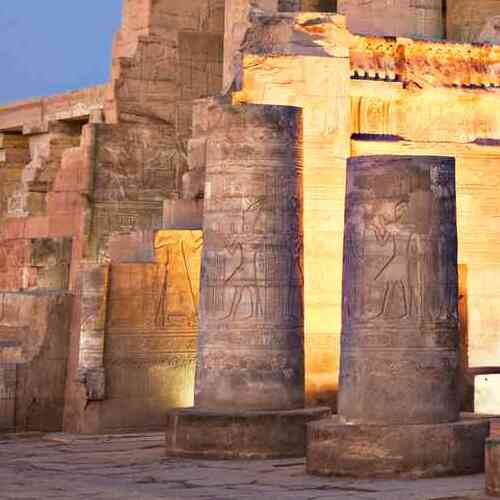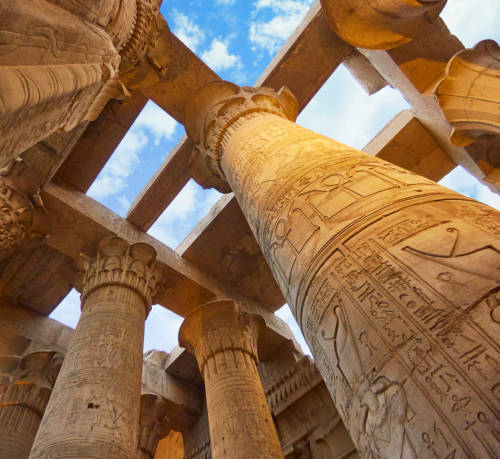No other nation in the world says ‘Welcome’ as often as the Egyptians, and every time, they mean it. While the ancient civilization of Egypt continues to amaze, contemporary Egyptians are equally remarkable.
The Speos of Horemheb
The Speos of Horemheb
The Speos of Horemheb is a remarkable yet somewhat lesser-known site that sits along the Nile in the Kom Ombo region. This rock-cut chapel was built during the reign of Horemheb, the last pharaoh of the 18th Dynasty, and it offers a unique glimpse into both the political and religious transitions of ancient Egypt.
Located in a cliff overlooking the Nile, the Speos is a beautifully carved structure that blends seamlessly into its natural surroundings. Speos (meaning “rock-cut temple”) were designed to be both functional and symbolic, serving as places of worship while embodying the permanence of the gods and the pharaoh’s rule, carved directly into the living rock. The structure here is modest compared to larger temples like those in Luxor or Karnak, but it holds a quiet significance.
Horemheb, who began his career as a military general, came to power during a period of great instability following the Amarna period of Akhenaten and Tutankhamun. His reign is often seen as one of restoration, where he sought to return Egypt to traditional religious practices after Akhenaten’s radical shift toward monotheism with the worship of Aten. In this context, the Speos of Horemheb represents more than just a temple; it is a symbol of Egypt’s return to its polytheistic roots, with a renewed emphasis on the worship of the gods that had long been central to Egyptian life.
The interior of the speos is simple but elegant, with finely carved reliefs depicting Horemheb offering tributes to various gods, including Amun-Ra, Ptah, and Thoth. These carvings were carefully designed to show the pharaoh’s devotion to these deities, reinforcing his role as the intermediary between the gods and the people. In one scene, Horemheb is shown making offerings to Hathor, the goddess of music, love, and motherhood, symbolizing his desire to restore harmony to the kingdom.
One of the most intriguing aspects of the Speos of Horemheb is its connection to both the gods of Egypt and the power of the Nile. The temple is positioned to take advantage of its location near the river, making it not just a place of worship but a spiritual point of connection between the earth and the life-giving waters of the Nile. The locals would have used this site for ceremonies and offerings, particularly during the Nile flood season, praying for good harvests and protection from the gods.
Though the speos is often overshadowed by Kom Ombo’s more famous dual temple, it offers a more intimate experience for those interested in ancient Egyptian religion and history. Exploring the site, you can still feel the reverence with which it was built, a sacred space carved into the stone as a lasting tribute to the gods and the legacy of Horemheb. It may be small, but the Speos of Horemheb is a powerful reminder of the enduring connection between Egypt’s rulers, its people, and the eternal flow of the Nile.
Created On March 18, 2020
Updated On Sept 23, 2024



